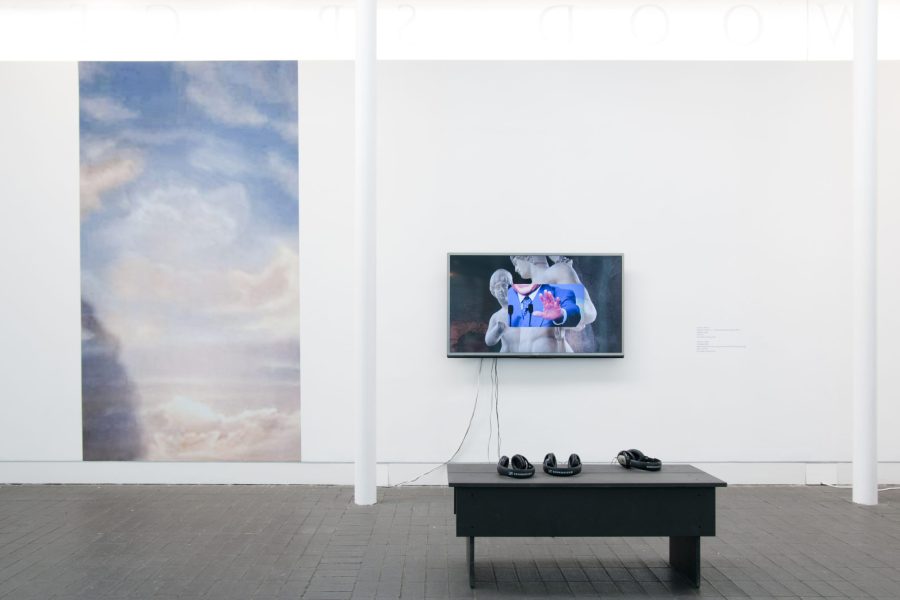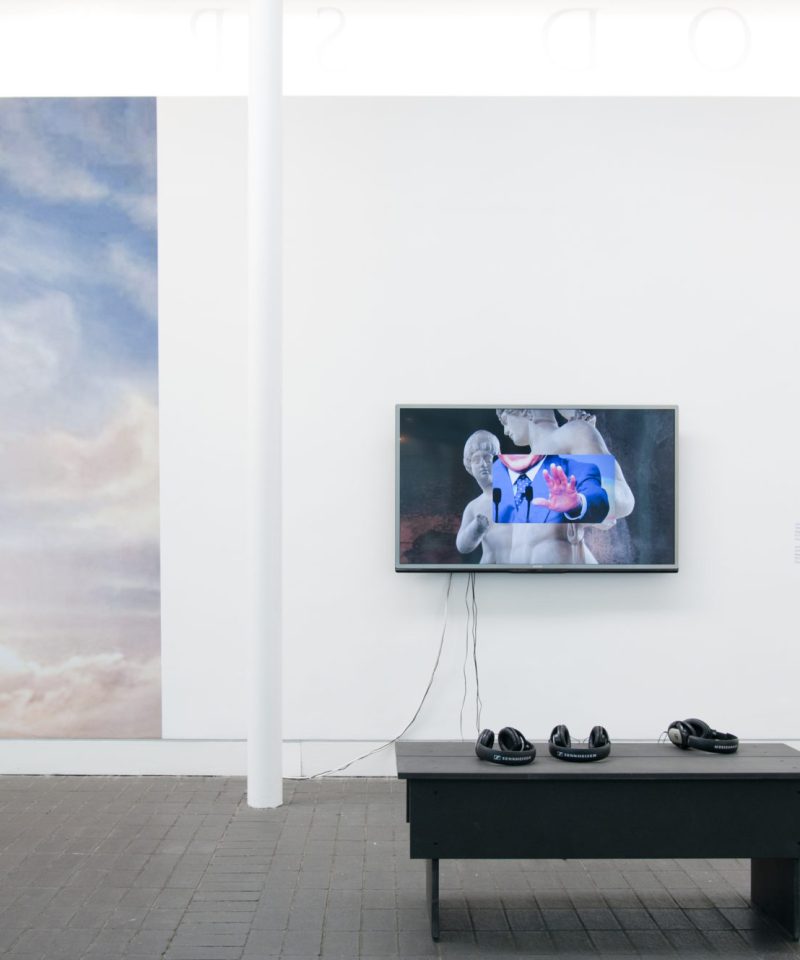The exhibition title TTTT originally referred to the acronym for These Things Take Time but the phrase has since been replaced by the internet shorthand for Too Tired To Type. The change may be indicative of a changing conception of time since 1984 when the pop band The Smiths produced an album entitled These Things Take Time (15 years before CDs became commercially available) up to the present moment where the internet is the dominant medium used for work, play and procrastination. Boredom means something completely different now our smart phones are here to accompany us while we wait for the bus. Waiting for a letter to arrive, and reply sent by snail mail is a distant memory – such an inefficient speed of communication is remembered almost like a fiction. These things are no longer expected to take up our time.

Cécile B. Evans has spoken about how September 11th marked a sea change for her, from which point on she could no longer distinguish images documenting the event from her subjective experience of being in New York and witnessing the planes fly overhead towards the World Trade Centre. The proliferation of image culture has the effect of conditioning our awareness and our memories in exactly this way. Oliver Laric’s Mansudae Overseas Project (2014) cleverly reverses the normal flow of images, rethinking what it means to be part of a globally networked society. Mansudae Overseas Projects is a construction company in North Korea which makes monuments and memorial statues for a Western audience. Laric’s project was the first commission the company accepted from an individual client. Instead of an heroic sculpture of some recognisable public figure, the sculpture is of an anonymous Asian man in non-professional workers clothing – possibly putting a face to the anonymous North Korean sculptor himself. This one-off gesture suggests the limits of the internet perceived as universally accessible and democratic – pointing to somewhere where the conception of time and production are purposefully different from our own.


In his recent video Marte e Venere – A Hand Held Monument (2013) Johann Arens presents an imagined continuity between the surface of a touch screen and the smooth, strokable surfaces of classical monuments, in particular the Venus and Mars from the Museum of Roman History in Rome. In his installation The Nest of the Wild Stones (2014) Nicolas Brooks also considers the ‘not quite real’ materiality of digitally printed objects putting together a landscape of exceptionally flawless surfaces and textures framing a video showing a series of 3D printing mishaps.

In the moment the printing process is interrupted, the difference between the perfect image of the model on the screen and the physical impossibility of that image is made clear. The delicate infrastructure supporting the surface planes relates to natural structures such as honey combs and webbing, making the installation, otherwise devoid of the natural world, in fact very natural by introducing ideas of entropy and fallibility. Although we are ever closer to mechanising many human processes and products of nature these things still take a lot longer than the ceaseless rhetoric driving technological progress within capitalist economies.
Nicholas Brooks, Applications (excerpt), 2014.


